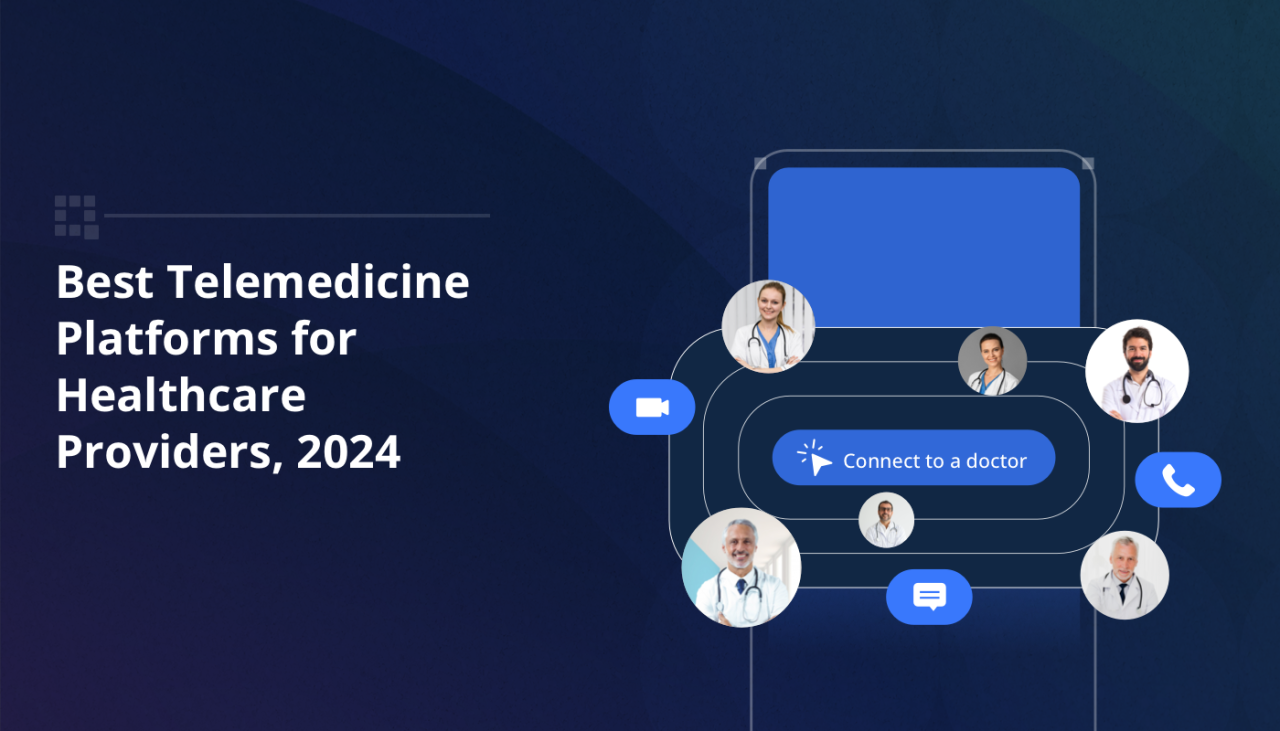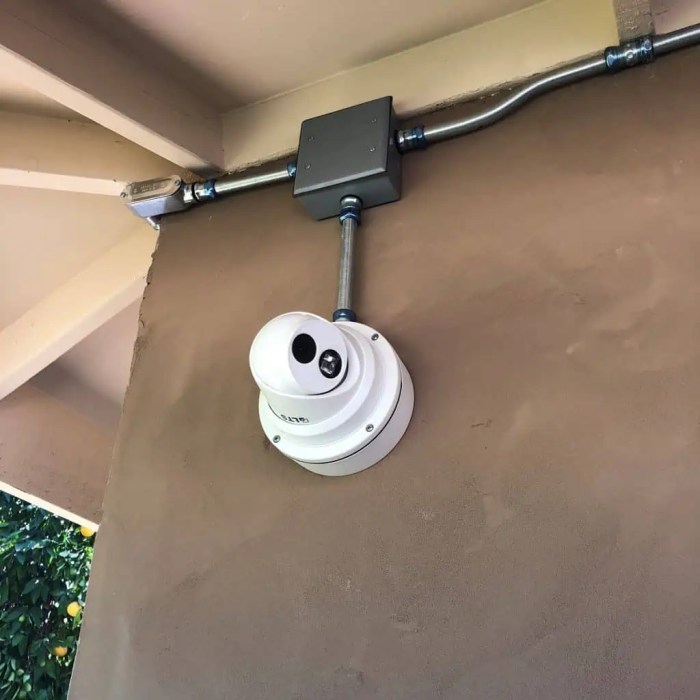Best telehealth platforms for global users: A Comprehensive Guide
Exploring the world of telehealth platforms tailored for global users, this guide delves into the key features, accessibility, security measures, integration with healthcare systems, and user feedback. Dive in to discover the top platforms revolutionizing healthcare services worldwide.
Overview of Telehealth Platforms

Telehealth platforms refer to online platforms that allow users to connect with healthcare providers remotely for medical consultations, diagnosis, and treatment. These platforms utilize technology such as video conferencing, messaging, and mobile apps to facilitate virtual healthcare services.Telehealth platforms have gained popularity globally due to the convenience and accessibility they offer to users.
Especially in remote or underserved areas, telehealth platforms bridge the gap between patients and healthcare professionals, enabling individuals to seek medical advice without the need to travel long distances or wait for appointments.The benefits of using telehealth platforms for users worldwide are numerous.
Patients can access healthcare services from the comfort of their homes, saving time and money on travel expenses. Additionally, telehealth platforms provide a means for individuals to receive timely medical care, reducing the risk of delayed treatment and improving overall health outcomes.
Overall, telehealth platforms improve healthcare access, efficiency, and patient satisfaction on a global scale.
Features to Look for in Telehealth Platforms

When choosing a telehealth platform, it is essential to consider the features it offers to ensure that it meets your needs and provides a seamless healthcare experience. Different platforms may offer a variety of features, so it is crucial to compare and contrast them to find the best fit for you.
Let's explore some key features to look for in telehealth platforms and how they cater to the diverse needs of global users.
1. Virtual Consultations
Virtual consultations are a fundamental feature of telehealth platforms, allowing users to connect with healthcare providers remotely. The ability to schedule appointments, have video calls, and receive medical advice online is crucial for users worldwide, especially those in remote areas or with limited access to healthcare facilities.
2. Secure Messaging and File Sharing
Secure messaging and file sharing capabilities are essential for telehealth platforms to ensure the confidentiality and privacy of patient information. Users should be able to communicate securely with their healthcare providers, share medical records, and receive test results without compromising their data.
3. Multi-Language Support
Global users come from diverse backgrounds and speak different languages. Telehealth platforms that offer multi-language support cater to the needs of users worldwide, ensuring that language barriers do not hinder access to healthcare services. This feature is crucial for providing inclusive and accessible care to all.
4. Prescription Management
Telehealth platforms should include prescription management features that allow healthcare providers to electronically prescribe medications, track prescriptions, and send refill reminders to patients. This feature streamlines the prescription process and ensures that users can easily manage their medications from anywhere in the world.
5. Integration with Wearable Devices
Integration with wearable devices, such as fitness trackers or smartwatches, enables telehealth platforms to gather real-time health data and provide personalized insights to users. This feature is beneficial for users who want to monitor their health metrics and track progress towards their health goals remotely.
6. Telemedicine Marketplace
Some telehealth platforms offer a telemedicine marketplace where users can browse and connect with healthcare providers based on specialty, availability, or pricing. This feature gives users the flexibility to choose a provider that meets their specific needs and preferences, making healthcare more accessible and convenient.
7. Insurance Verification
Insurance verification features help users determine if their telehealth consultations and services are covered by their insurance plans. This feature simplifies the billing process and ensures that users can access telehealth services without financial barriers, promoting equal access to healthcare for global users.
Accessibility and User-Friendliness
Accessibility and user-friendliness are crucial factors in telehealth platforms to ensure that users from different regions can easily navigate and utilize the services provided. This includes considerations for individuals with disabilities, language barriers, and varying levels of technological proficiency.
Importance of Accessibility for Users in Different Regions
Accessibility is essential for users in different regions to be able to access telehealth services without facing any barriers. This includes considerations for individuals with visual or auditory impairments, motor disabilities, or other limitations that may affect their ability to use traditional healthcare services.
By ensuring that telehealth platforms are accessible to all users, regardless of their location or background, healthcare providers can reach a wider audience and provide inclusive care to everyone in need.
User-Friendly Interfaces in Top Telehealth Platforms
Top telehealth platforms prioritize user-friendly interfaces to make it easy for users to schedule appointments, communicate with healthcare providers, access medical records, and receive care remotely. For example, platforms like Teladoc, Amwell, and Doctor on Demand offer intuitive interfaces with clear navigation menus, appointment scheduling features, and secure messaging systems.
These interfaces are designed to be simple and straightforward, ensuring that users can access telehealth services without any confusion or difficulty.
Role of Language Options in Global Accessibility
Language options play a crucial role in making telehealth platforms accessible globally by providing multilingual support for users who may not be fluent in the platform's default language. By offering multiple language options, telehealth platforms can cater to a diverse range of users from different regions and backgrounds.
For example, platforms like Doxy.me and Babylon Health provide language options in multiple languages, allowing users to receive care in their preferred language. This helps to break down language barriers and ensure that all users can access telehealth services regardless of their linguistic abilities.
Security and Privacy Measures
Ensuring robust security measures in telehealth platforms is crucial to protect sensitive user data and maintain confidentiality. This is especially important when dealing with personal health information that must be kept secure at all times
Comparison of Privacy Policies
- Platform A: Implements end-to-end encryption to safeguard all communications and data shared on the platform.
- Platform B: Adheres to strict data protection regulations and regularly undergoes security audits to ensure compliance.
- Platform C: Provides users with full control over their data and allows them to customize privacy settings according to their preferences.
Encryption and Data Protection
Telehealth platforms employ encryption techniques to secure data transmission and storage. By encrypting information, platforms can prevent unauthorized access and ensure that user privacy is maintained.
Integration with Healthcare Systems

Telehealth platforms play a crucial role in integrating with existing healthcare systems worldwide, enhancing the delivery of medical services. This integration allows for seamless communication between healthcare providers and patients, leading to improved access to care and better health outcomes.
Successful Collaborations
Successful collaborations between telehealth platforms and healthcare providers have been observed globally. For example, platforms like Teladoc Health and Amwell have partnered with hospitals, clinics, and health systems to offer virtual consultations, remote monitoring, and other telehealth services. These collaborations have increased the reach of healthcare services, especially in underserved areas, and have improved the overall patient experience.
- Integration of telehealth platforms with electronic health records (EHR) systems for easy access to patient data.
- Collaboration with pharmacies for medication management and delivery services.
- Partnerships with medical device companies for remote monitoring of patients with chronic conditions.
- Integration with insurance providers for seamless billing and reimbursement processes.
Challenges and Benefits
Integrating telehealth platforms with healthcare systems comes with its own set of challenges and benefits. While seamless integration can improve care coordination, efficiency, and patient satisfaction, it also poses challenges related to data security, interoperability, and regulatory compliance.
- Benefits include improved access to care, reduced healthcare costs, and better patient outcomes.
- Challenges involve ensuring data privacy, addressing interoperability issues, and complying with different healthcare regulations across regions.
- Integration may require significant investment in technology infrastructure and training for healthcare providers and staff.
- Despite the challenges, the benefits of integrating telehealth platforms with healthcare systems outweigh the drawbacks, making it a valuable tool for global users seeking convenient and effective healthcare services.
Telehealth Platform Reviews and User Feedback
Telehealth platforms have gained popularity globally, providing users with convenient access to healthcare services from the comfort of their homes. User reviews and feedback play a crucial role in shaping the development and improvement of these platforms. By analyzing user experiences, we can identify the strengths and weaknesses of popular telehealth platforms and understand how user feedback has influenced their evolution.
Telehealth Platform Strengths and Weaknesses
- Strengths:
- Convenience: Users appreciate the ease of scheduling appointments and consulting with healthcare providers remotely.
- Accessibility: Telehealth platforms allow users to access medical care regardless of their location, improving healthcare outcomes for individuals in rural or underserved areas.
- Cost-effectiveness: Many users find telehealth services to be more affordable than traditional in-person visits, saving time and money.
- Weaknesses:
- Technical Issues: Some users have reported difficulties with connectivity or glitches during video consultations, leading to frustration.
- Lack of Personalization: Users have expressed concerns about the impersonal nature of virtual consultations, missing the in-person connection with healthcare providers.
- Security Concerns: Privacy and data security have been highlighted as potential weaknesses, raising doubts about the confidentiality of medical information shared on these platforms.
Influence of User Feedback on Platform Development
User feedback serves as a valuable source of information for telehealth platform developers, guiding them in addressing user concerns and enhancing the overall user experience. By listening to user suggestions and addressing issues raised in reviews, telehealth platforms can continuously improve their services, functionality, and security measures.
The iterative process of incorporating user feedback ensures that these platforms evolve to meet the changing needs and expectations of users, ultimately enhancing the quality of care delivered through telehealth services.
Last Word
In conclusion, the landscape of telehealth platforms for global users is rapidly evolving to meet the diverse needs of individuals worldwide. From enhanced security measures to seamless integration with existing healthcare systems, these platforms are reshaping the way healthcare is accessed and delivered.
Stay informed and make the most of the technological advancements in telehealth for a healthier future.
FAQ
What are the key features to look for in telehealth platforms?
Key features to consider include user-friendly interfaces, robust security measures, language options, seamless integration with healthcare systems, and positive user feedback.
How do telehealth platforms ensure user privacy?
Platforms implement encryption, strict privacy policies, and data protection measures to safeguard user data and ensure privacy.
Are telehealth platforms accessible globally?
Yes, telehealth platforms prioritize accessibility by offering user-friendly interfaces and language options to cater to users in different regions.




